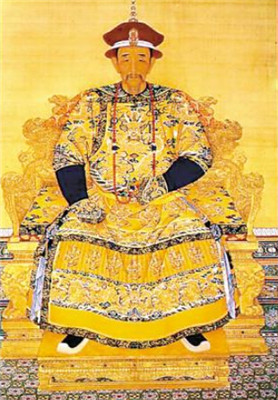Kangxi (1654——1722) was the second emperor of the Qing Dynasty. His personal name was Xuanye. One of China's most capable rulers, Kangxi(1661——1722) laid the foundation for a long period of political stability and prosperity.
康熙(1654——1722),名玄烨,清朝的第二个皇帝 (1661——1722),中国最有能力的统治者之一,为中国长期的政治稳定和繁荣奠定了基础。

Under his reign, the Treaty of Nerchinsk was signed with Russia, parts of Outer Mongolia were added to China's territory, and control was extended over Tibet.
在康熙统治期间,中国与俄国签订了《尼布楚条约》,外蒙古的部分地区成了中国的领土,西藏也被纳人管辖范围。
Domestically, Kangxi's reign was a time of large-scale public works,such as repairing the Grand Canal to permit transportation of rice to feed the northern population, and dredging and banking the Huang He (Yellow River) to prevent destructive flooding.
在国内,康熙修建了大规模的公共工程,例如:修理大运河,以将南方的大米运到北方; 为防洪水,疏通黄河河道,修建大堤。
Kangxi reduced taxes many times and opened four ports to foreign ships for trade.
康熙多次减税,为外商开放了四个港口。
Though an ardent proponent of Neo-Confucianism, he also welcomed Jesuit missionaries, whose accomplishments led him to permit the propagation of Roman Catholicism in China.
尽管康熙是新儒学的热心支持者,但也欢迎耶稣会传教士。他们的造诣使得康熙允许罗马天主教在中国传播。
He commissioned many books, including The Kangxi Dictionary and A History of The Ming Dynasty.
康熙命人编纂了许多书,其中有《康熙字典》和《明史》。













